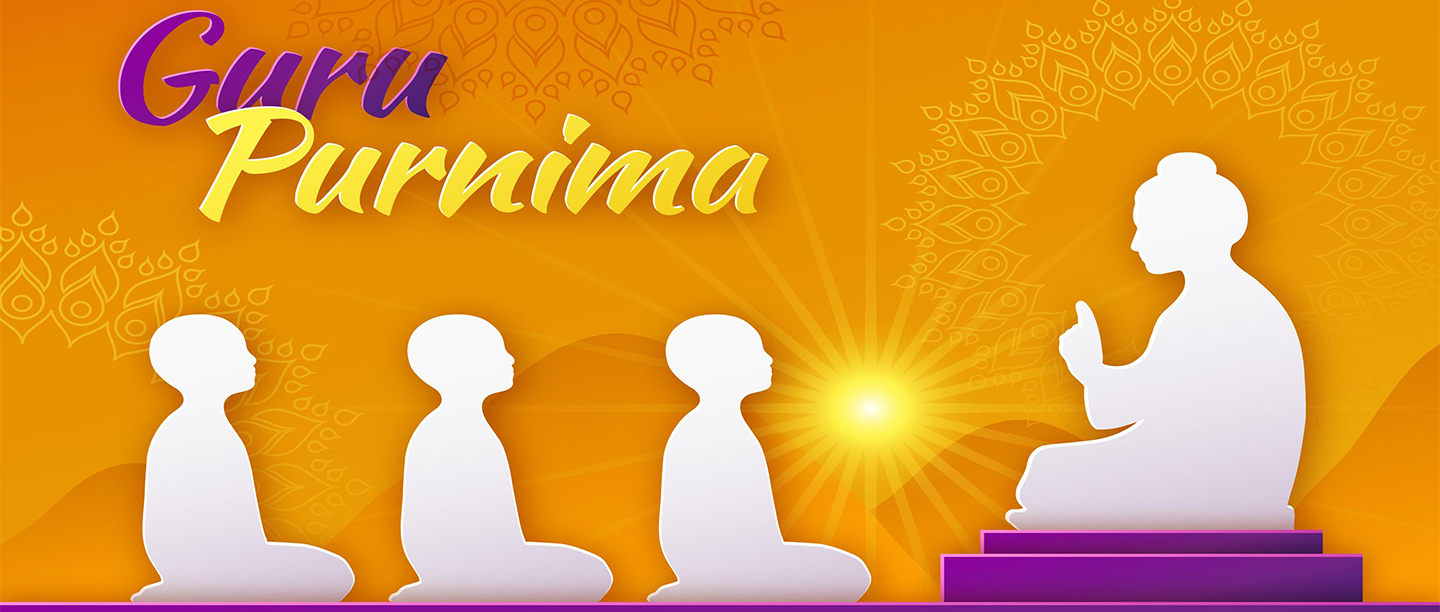Guru Purnima, also known as Vyasa Purnima, is a popular festival amongst Hindus, Buddhists, & Jains to pay respect & honour to the relationship between teachers and disciples. The festival has great significance in the life of every student and people across the nation celebrate the day with great enthusiasm and fervour. It falls in the Hindu month of Ashadha on the day of Purnima (full moon). From Guru Purnima date, Guru Purnima history, Guru Purnima significance and Guru Purnima rituals, here’s everything you need to know about the festival.
Guru Purnima Date

As per the Hindu calendar, Guru Purnima is observed all across India on Ashadha Purnima (full moon day in Ashada month). The day is marked as the birth anniversary of Veda Vyasa when students pay respect to their gurus. People across the country of all religions including Hindus, Buddhists, and Jains celebrate and observe Guru Purnima on 24th July 2021.
Guru Purnima History

Guru Purnima is a major festival for Hindus, Jains, & Buddhists, where each religion has its rich Guru Purnima history.
According to Hinduism, Lord Shiva became a Guru by transmitting the knowledge of Yoga to his seven followers or the ‘Saptarishis.’ Since that time, devotees of the Hindu religion marked this day as Guru Purnima which is also called Ved Vyasa, meaning the great sage was born. It is also believed that he finished writing his famous work, Brahma Sutra, on the same day. According to Buddhism, Guru Purnima is celebrated to pay respect to Lord Buddha, who is the one who laid the foundation of this religion. It is also believed by the Buddhists that on this full moon day, Lord Buddha delivered his first sermon at Sarnath, Uttar Pradesh, after attaining enlightenment under the Bodhi Tree in Bodhgaya. From that day and time, this festival was dedicated to worshipping him. And according to Jainism, the festival is observed as Treenok Guha Purnima to honour their Guru Mahavira, the famous 24th Tirthankara in Jainism. This religion’s followers believe that on this day, Mahavira got his first follower, Gautam Swami, after which he successfully became a Treenok Guha.
Guru Purnima Importance and Significance

Guru Purnima’s importance holds great value. It is the guru who imbibes great qualities and provides the disciples with great knowledge. Thus, Guru Purnima is celebrated in honour of gurus, parents, or teachers. Guru Purnima’s significance is about the word Guru that is derived from its Sanskrit roots in which Gu means darkness and Ru means remover of the darkness. Thus, Guru is someone who removes the darkness of our lives and paves the way for us. The festival aims to rejoice and praise the teachers who helped us in our lives in any way by sharing their knowledge. Thus, a celebration of this day becomes essential. On this day, people perform ritualistic puja in honour of their gurus, students pay respect to their teachers and educators, whereas children thank their parents in the form of speeches, gifts, flowers, etc.
Guru Purnima Rituals
Over the years, the definition of guru has changed. Guru Purnima is celebrated by worshipping and showing gratitude to the Gods who are like our Gurus, in the form of parents, teachers, or anybody who teaches someone. And the festival is celebrated with full honour and zest in different ways amongst people of different faiths! So go ahead and check out these Guru Purnima rituals!
- On Guru Purnima, people offer prayers to their Gurus.
- Hindus celebrate Guru Purnima by chanting mantras venerating the Maha Guru and seek his blessings. Devotional songs and hymns are also chanted throughout the day and ‘Guru Gita’ is recited in the loving memory of the Maha Guru. Flowers and gifts are offered, and prasad is also distributed, sometimes also called ‘Charanamritha.’
- In Hindus, a puja of sandals is conducted in Ashrams believing it to be that of Sage Ved Vyasa. Fellow disciples are also given respect on this day, honouring each person’s spiritual journey. Some also start their spiritual journeys or studies on this day by offering ‘Deeksha’ to their gurus.
- Many people fast during the day and avoid eating salt, rice, heavy foods such as non-vegetarian food, and other meals made up of cereals. They break the fast only after they perform the puja in the evening. Only vegetarian delicacies are made in most Indian households such as Soan Papdi, Khichdi, Laddoo, Kheer, Gulab Jamun, etc.
- Students of Indian classical music celebrate the day by offering respect to their teachers, reinforcing the sacred bond between a teacher and a student, known as the ‘Guru-Shishya Parampara.’
- In Buddhism, Buddhists celebrate Guru Purnima by conducting a ritual called ‘Uposatha.’ In this, Buddhists honour the eight teachings of the Buddha, and many Buddhist monks start their journey of meditation on this day.
- Some people donate clothes and food on this day, whereas some offer food to ‘Brahmins’ and feed the needy people. Giving food and clothes helps one reduce the ill effects of their Kundli.
More On Guru Purnima
Teachings Of Guru Nanak Dev Ji In English: Here are 10 Guru Nanak dev Ji teachings that’ll help you lead a more wholesome life.
Guru Purnima Quotes – You can’t simply miss wishing your Gurus on this auspicious occasion, right? And the best way to do this is by sharing Guru Purnima quotes. Check them out!
Guru Purnima Celebration – Here’s everything you ever wanted to know about celebrating Guru Purnima in different ways!
Guru Purnima Wishes in Hindi – This Guru Purnima send some awesome wishes to your Guru and brighten up their day.
Independence Day Significance – Checkout Independence Day’s significance & get to know what started when we got freedom!
Featured Image: Freepik.com




